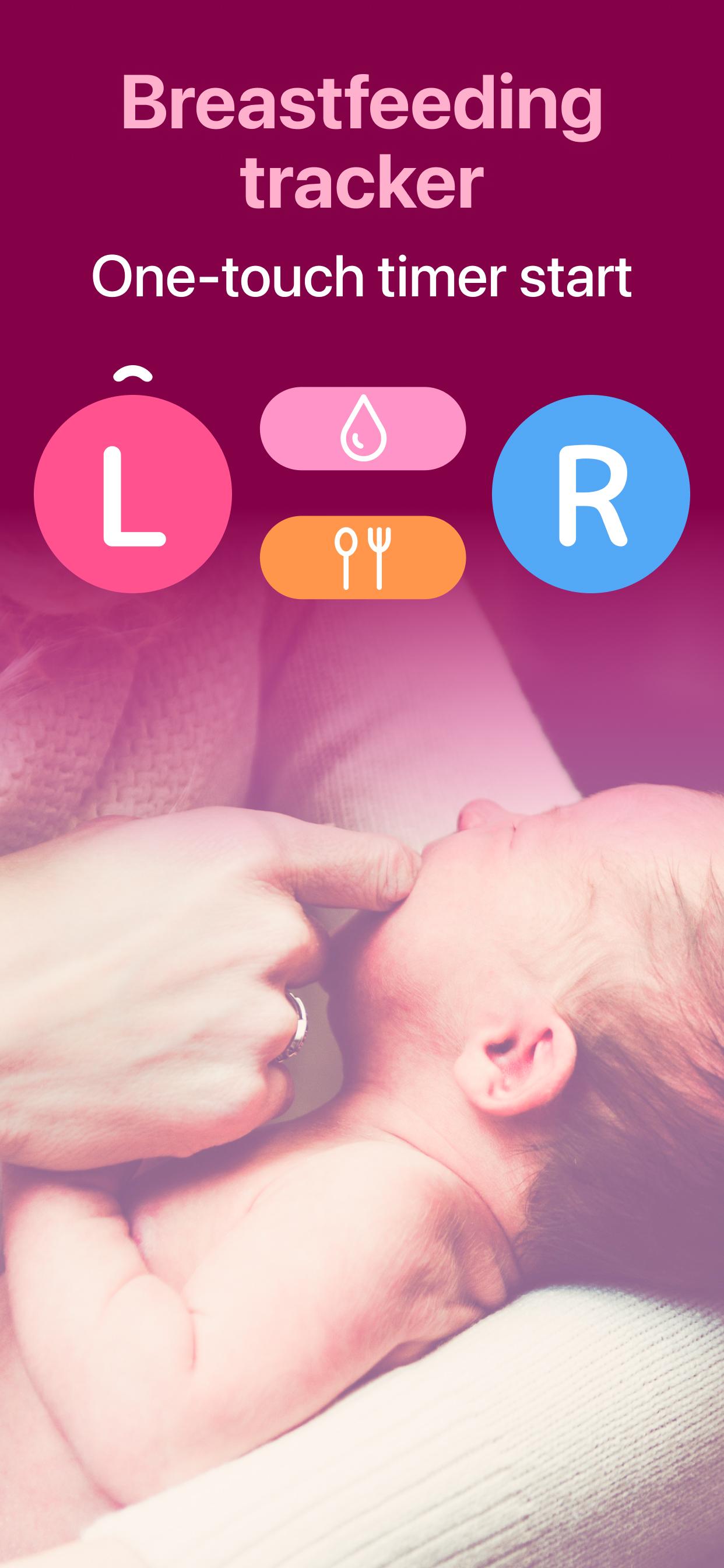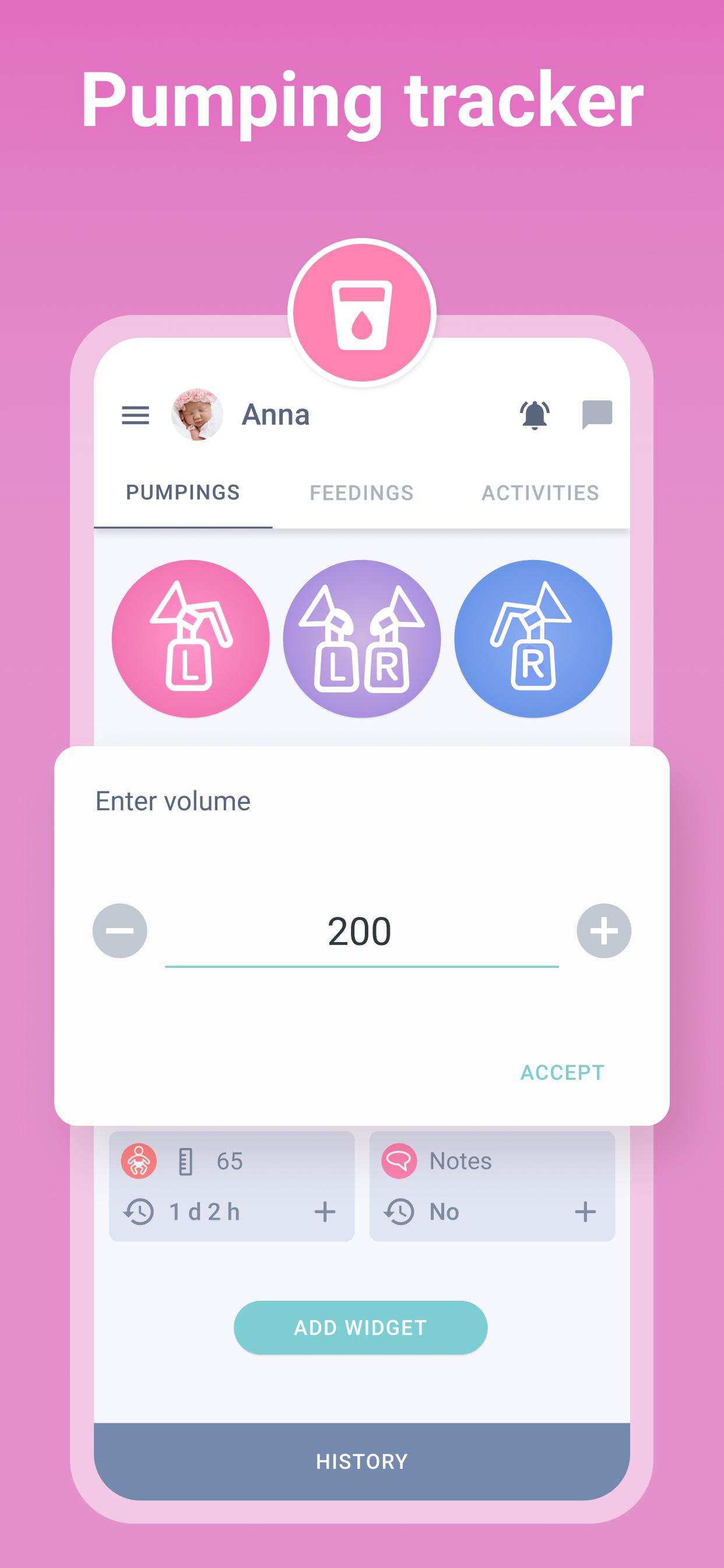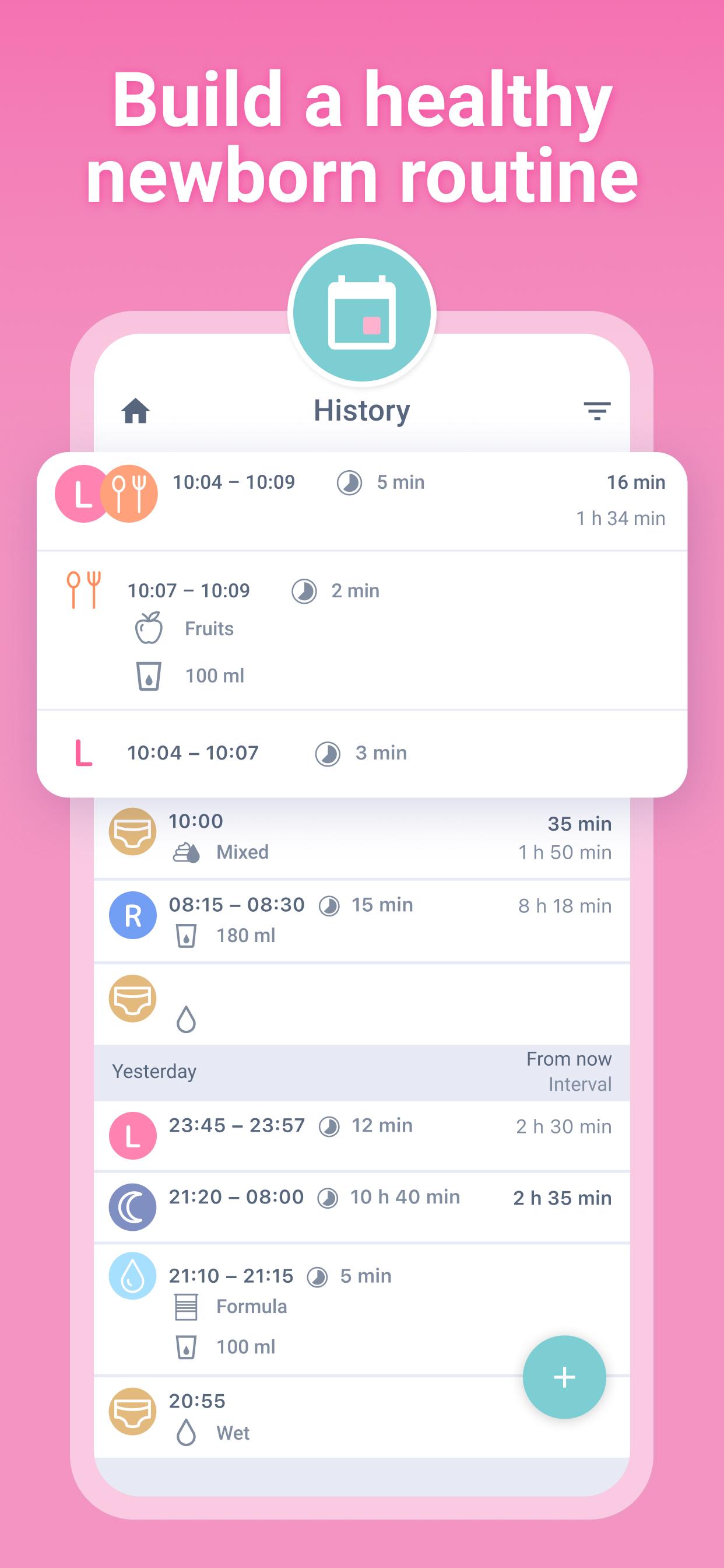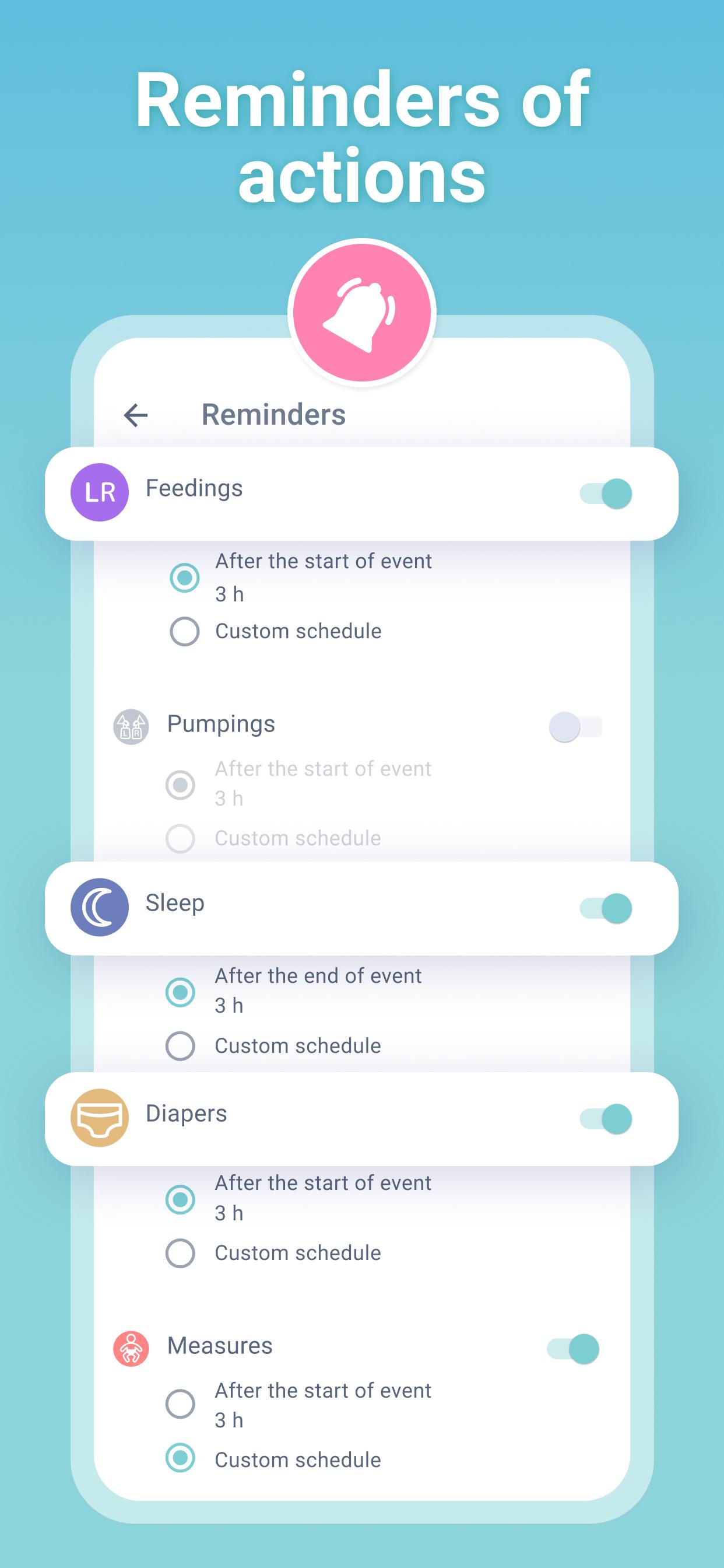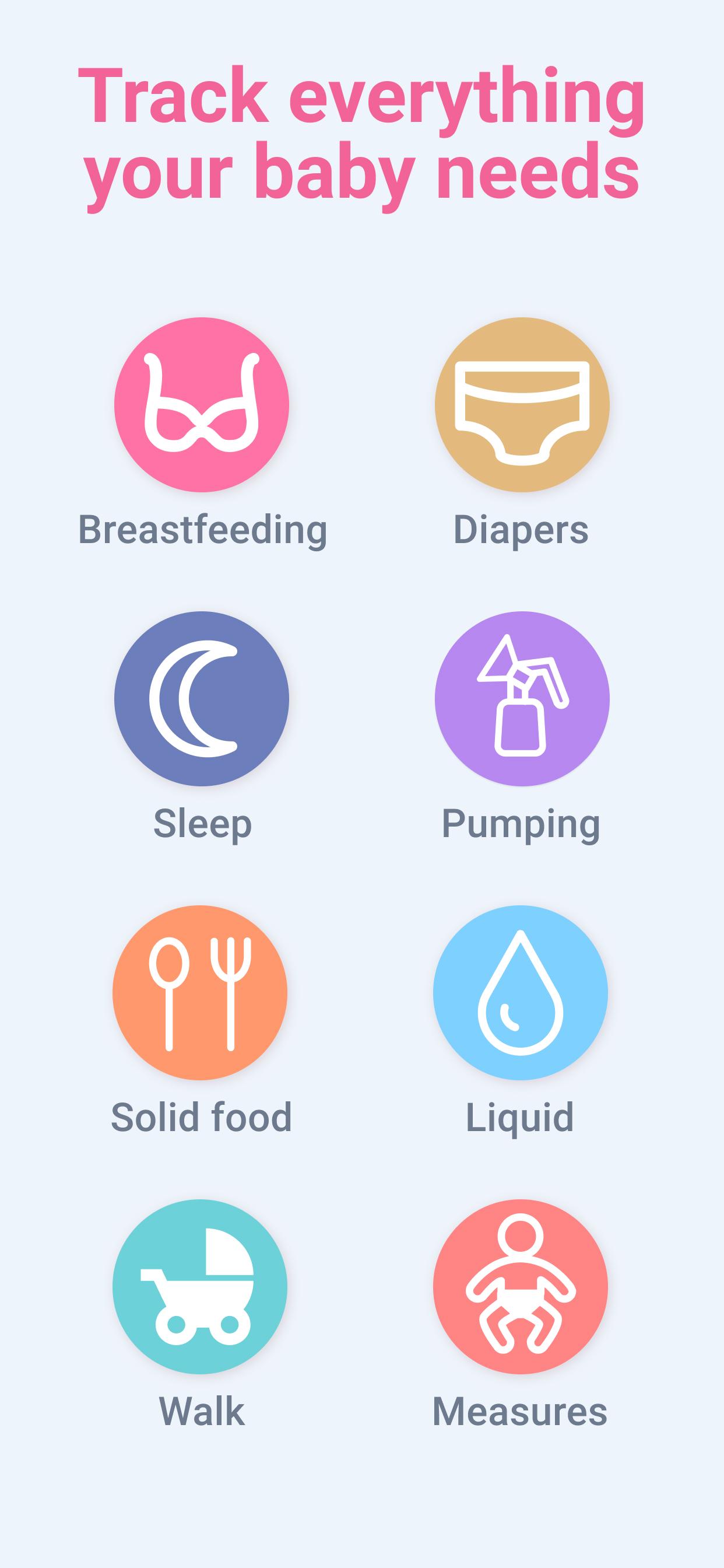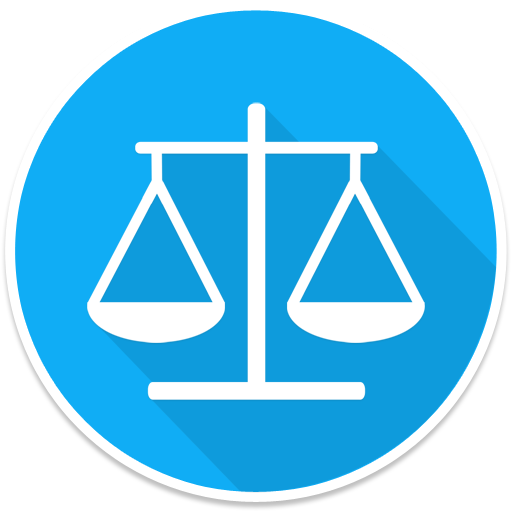Newborn log: baby feeding, pump log, sleep, diapers, breast feeding, development
The simplest program to track breastfeeding, pumping, bottle feeding, solid food consumption, diapers, sleep schedule, height and weight, and more.
With the click of a button your feedings and baby care history will be stored in the app. You will have an easy-to-maintain history of your baby’s growth.
In the application, you can share baby's data with your partner, relatives, or nanny. Syncing data between multiple devices is available for free.
The birth of a baby is a miracle that fills your heart with joy! A mother’s life changes dramatically with the birth of her baby. It is so important for a mother and her newborn baby to establish a comfortable breastfeeding relationship. Moms need to keep track of which breast to offer her baby, how long the baby suckles at each breast, the number of times the baby breastfeeds each day, how many wet diapers and bowel movements the baby has, how long and frequently the baby sleeps, as well as the baby’s weight and growth. All of this information is important for the self-assessment of breastfeeding and for assessing the growth of the child. Having this information easily accessible will be extremely useful when visiting with your pediatrician or lactation consultant.
It is important to record all of this data. Do not rely on your memory, because even the most organized mothers are often lost in the sea of information about their newborn.
Use the features of the Breastfeeding application.
Breastfeeding and pumping:
- record the time and quantity of feedings and / or pumpings;
- note which breast was fed or pumped last to ensure starting new feeding/pumping on the opposite breast;
- record the duration of feeding / pumping;
- pause feeding / pumping, if necessary;
- brief feedings / pumpings, or those that occur within a short period of time, are grouped into one feeding / pumping event
- quickly add feeding / pumping session that was similar to the most recent but update with current time
- use the maximum duration of feeding setting and the application will stop recording the feeding / pumping at the set time if you are unable to press stop
Liquids:
- consider all of your child’s fluid intake (water, expressed breast milk, formula, juice, etc.);
-track your child’s reactions to new fluids and leave comments for yourself and other caregivers;
- set the default fluid volume (can be edited as needed);
Feeding (solid food):
- add solid foods as your child begins eating them (cereal, vegetables, fruits, meat, fish);
- track your child’s reactions to these new foods and leave comments for yourself and other caregivers
- set the default fluid volume (can be edited as needed);
Sleep:
- record the time and duration of your baby’s sleep each day so you can better plan your day;
- compare your baby’s sleep habits with recommended sleep guidelines
Diapers:
- track the number of your baby’s wet and / or dirty diapers. This information is crucial for noticing signs of dehydration, constipation, and diarrhea and alerting the child’s pediatrician if necessary.
Measurements:
- track height and weight to evaluate your baby’s development;
Other features:
- edit or delete events as needed;
- set reminders for various events;
- use the application in your native language (more than 40 languages available);
- select your preferred units of measurement (ounces or milliliters);
- browse graphs;
- view statistics;
- enter data for several children and twins;
- backup all of your data;
and more!
PRO-version
- disable advertising;
- install widgets for quick viewing and launch;
- auto backup every 24 hours;
- export to Excel
We are constantly working to improve the application. Write to us with questions and suggestions.
Enjoy watching your healthy baby grow!
Want to receive the latest news about the application? Subscribe to the news group at https://www.facebook.com/WhisperArts
What's New in the Latest Version 5.9.0
Last updated on Jul 16, 2024
- minor improvements
We always welcome your questions, suggestions, and comments. Use the feedback form in the application, or write to us at
Breastfeeding is the natural way to feed a baby and provides numerous benefits for both the mother and the child. It is recommended by the World Health Organization (WHO) as the exclusive source of nutrition for the first six months of life, with continued breastfeeding for up to two years or beyond.
Benefits for the Baby:
* Optimal nutrition: Breast milk is the perfect food for babies, providing all the essential nutrients they need for growth and development. It is easily digestible and contains antibodies that protect against infections.
* Reduced risk of allergies and asthma: Breastfed babies have a lower risk of developing allergies and asthma, as breast milk helps strengthen their immune system.
* Improved cognitive development: Breastfeeding has been linked to improved cognitive development, including higher IQ scores and better problem-solving skills.
* Reduced risk of sudden infant death syndrome (SIDS): Breastfeeding is associated with a reduced risk of SIDS, a leading cause of infant mortality.
Benefits for the Mother:
* Uterine contraction: Breastfeeding helps the uterus contract back to its pre-pregnancy size.
* Reduced risk of postpartum bleeding: Breastfeeding releases oxytocin, which helps reduce postpartum bleeding.
* Lower risk of breast and ovarian cancer: Women who breastfeed have a lower risk of developing breast and ovarian cancer later in life.
* Emotional bonding: Breastfeeding promotes a close emotional bond between the mother and the baby.
How to Breastfeed:
* Latch: The baby should latch onto the breast with their mouth wide open, taking in both the nipple and the areola.
* Positioning: The baby should be held in a comfortable position, close to the mother's body.
* Frequency: Breastfeed on demand, as often as the baby needs.
* Duration: Feed for as long as the baby wants.
Troubleshooting:
* Sore nipples: Apply a warm compress or lanolin cream to the nipples after breastfeeding.
* Engorgement: Use cold compresses or cabbage leaves to reduce swelling.
* Mastitis: If you experience pain, redness, or swelling in the breast, you may have mastitis. Seek medical attention promptly.
* Low milk supply: Increase the frequency of breastfeeding and consider consulting with a lactation consultant.
Conclusion:
Breastfeeding is a natural and beneficial practice that provides numerous advantages for both the mother and the baby. By understanding the benefits and techniques of breastfeeding, mothers can confidently nourish and bond with their children.
Newborn log: baby feeding, pump log, sleep, diapers, breast feeding, development
The simplest program to track breastfeeding, pumping, bottle feeding, solid food consumption, diapers, sleep schedule, height and weight, and more.
With the click of a button your feedings and baby care history will be stored in the app. You will have an easy-to-maintain history of your baby’s growth.
In the application, you can share baby's data with your partner, relatives, or nanny. Syncing data between multiple devices is available for free.
The birth of a baby is a miracle that fills your heart with joy! A mother’s life changes dramatically with the birth of her baby. It is so important for a mother and her newborn baby to establish a comfortable breastfeeding relationship. Moms need to keep track of which breast to offer her baby, how long the baby suckles at each breast, the number of times the baby breastfeeds each day, how many wet diapers and bowel movements the baby has, how long and frequently the baby sleeps, as well as the baby’s weight and growth. All of this information is important for the self-assessment of breastfeeding and for assessing the growth of the child. Having this information easily accessible will be extremely useful when visiting with your pediatrician or lactation consultant.
It is important to record all of this data. Do not rely on your memory, because even the most organized mothers are often lost in the sea of information about their newborn.
Use the features of the Breastfeeding application.
Breastfeeding and pumping:
- record the time and quantity of feedings and / or pumpings;
- note which breast was fed or pumped last to ensure starting new feeding/pumping on the opposite breast;
- record the duration of feeding / pumping;
- pause feeding / pumping, if necessary;
- brief feedings / pumpings, or those that occur within a short period of time, are grouped into one feeding / pumping event
- quickly add feeding / pumping session that was similar to the most recent but update with current time
- use the maximum duration of feeding setting and the application will stop recording the feeding / pumping at the set time if you are unable to press stop
Liquids:
- consider all of your child’s fluid intake (water, expressed breast milk, formula, juice, etc.);
-track your child’s reactions to new fluids and leave comments for yourself and other caregivers;
- set the default fluid volume (can be edited as needed);
Feeding (solid food):
- add solid foods as your child begins eating them (cereal, vegetables, fruits, meat, fish);
- track your child’s reactions to these new foods and leave comments for yourself and other caregivers
- set the default fluid volume (can be edited as needed);
Sleep:
- record the time and duration of your baby’s sleep each day so you can better plan your day;
- compare your baby’s sleep habits with recommended sleep guidelines
Diapers:
- track the number of your baby’s wet and / or dirty diapers. This information is crucial for noticing signs of dehydration, constipation, and diarrhea and alerting the child’s pediatrician if necessary.
Measurements:
- track height and weight to evaluate your baby’s development;
Other features:
- edit or delete events as needed;
- set reminders for various events;
- use the application in your native language (more than 40 languages available);
- select your preferred units of measurement (ounces or milliliters);
- browse graphs;
- view statistics;
- enter data for several children and twins;
- backup all of your data;
and more!
PRO-version
- disable advertising;
- install widgets for quick viewing and launch;
- auto backup every 24 hours;
- export to Excel
We are constantly working to improve the application. Write to us with questions and suggestions.
Enjoy watching your healthy baby grow!
Want to receive the latest news about the application? Subscribe to the news group at https://www.facebook.com/WhisperArts
What's New in the Latest Version 5.9.0
Last updated on Jul 16, 2024
- minor improvements
We always welcome your questions, suggestions, and comments. Use the feedback form in the application, or write to us at
Breastfeeding is the natural way to feed a baby and provides numerous benefits for both the mother and the child. It is recommended by the World Health Organization (WHO) as the exclusive source of nutrition for the first six months of life, with continued breastfeeding for up to two years or beyond.
Benefits for the Baby:
* Optimal nutrition: Breast milk is the perfect food for babies, providing all the essential nutrients they need for growth and development. It is easily digestible and contains antibodies that protect against infections.
* Reduced risk of allergies and asthma: Breastfed babies have a lower risk of developing allergies and asthma, as breast milk helps strengthen their immune system.
* Improved cognitive development: Breastfeeding has been linked to improved cognitive development, including higher IQ scores and better problem-solving skills.
* Reduced risk of sudden infant death syndrome (SIDS): Breastfeeding is associated with a reduced risk of SIDS, a leading cause of infant mortality.
Benefits for the Mother:
* Uterine contraction: Breastfeeding helps the uterus contract back to its pre-pregnancy size.
* Reduced risk of postpartum bleeding: Breastfeeding releases oxytocin, which helps reduce postpartum bleeding.
* Lower risk of breast and ovarian cancer: Women who breastfeed have a lower risk of developing breast and ovarian cancer later in life.
* Emotional bonding: Breastfeeding promotes a close emotional bond between the mother and the baby.
How to Breastfeed:
* Latch: The baby should latch onto the breast with their mouth wide open, taking in both the nipple and the areola.
* Positioning: The baby should be held in a comfortable position, close to the mother's body.
* Frequency: Breastfeed on demand, as often as the baby needs.
* Duration: Feed for as long as the baby wants.
Troubleshooting:
* Sore nipples: Apply a warm compress or lanolin cream to the nipples after breastfeeding.
* Engorgement: Use cold compresses or cabbage leaves to reduce swelling.
* Mastitis: If you experience pain, redness, or swelling in the breast, you may have mastitis. Seek medical attention promptly.
* Low milk supply: Increase the frequency of breastfeeding and consider consulting with a lactation consultant.
Conclusion:
Breastfeeding is a natural and beneficial practice that provides numerous advantages for both the mother and the baby. By understanding the benefits and techniques of breastfeeding, mothers can confidently nourish and bond with their children.



